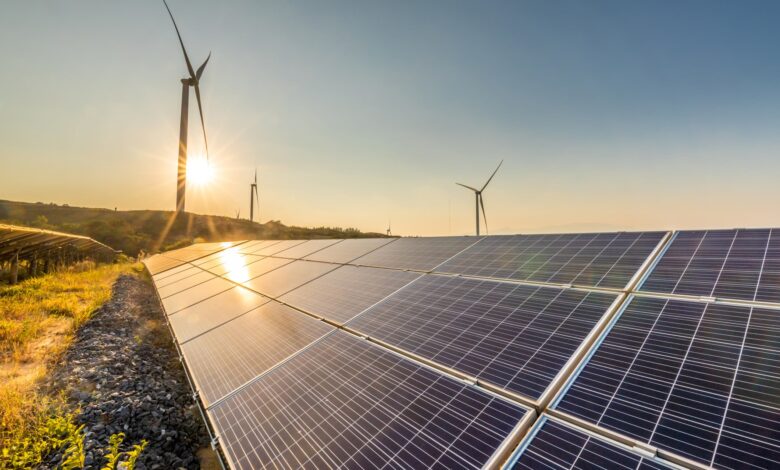A Key to Renewable Energy Solutions

Introduction
As the global community moves towards a more sustainable energy future, the integration of renewable energy sources has become essential. Among these, solar energy stands out due to its abundance and decreasing costs. However, one significant challenge remains: the intermittency of solar power. This is where energy storage systems (ESS) play a pivotal role. This article explores the concept of energy storage systems, with a particular focus on solar energy storage systems, their importance, types, and future prospects.
What is an Energy Storage System?
An Energy Storage System (ESS) is a technology designed to store energy for later use. ESS can capture energy produced at one time and release it when needed, providing flexibility and reliability in power supply. They help balance supply and demand, ensure grid stability, and enhance the efficiency of energy systems.
Importance of Energy Storage Systems
- Grid Stability: ESS can absorb excess energy during periods of low demand and release it during peak demand, stabilizing the grid and preventing outages.
- Integration of Renewables: By storing energy generated from renewable sources like solar and wind, ESS mitigates the variability and intermittency of these sources.
- Energy Independence: ESS allows users to store energy when prices are low or when renewable generation is high, reducing reliance on the grid and lowering energy costs.
- Emergency Backup: In the event of power outages, ESS can provide an uninterrupted power supply to critical infrastructure.
Solar Energy Storage Systems
A solar energy storage system specifically refers to storing energy harnessed from solar panels. As solar power generation is contingent on sunlight, which is not available at all times, effective storage solutions are crucial to making solar energy a reliable resource.
Types of Solar Energy Storage Systems
- Battery Storage Systems:
- Lithium-Ion Batteries: These are the most common in solar applications due to their high energy density, efficiency, and declining costs. They are ideal for residential and small commercial solar storage.
- Lead-Acid Batteries: Though less efficient and with a shorter lifespan than lithium-ion, lead-acid batteries are cheaper and have been used for decades.
- Flow Batteries: Utilizing liquid electrolytes, flow batteries offer scalability and long-duration storage, making them suitable for large-scale solar installations.
- Thermal Storage Systems: These systems store excess solar energy as heat, which can be used directly or converted back into electricity. They are particularly effective in concentrating solar power (CSP) plants.
- Mechanical Storage:
- Pumped Hydro Storage: This traditional method uses surplus electricity to pump water uphill to a reservoir. When energy is needed, the water flows back down, generating electricity.
- Flywheel Storage: Flywheels store energy in the form of kinetic energy. They offer high power density and rapid discharge, suitable for short-term energy storage.
Benefits of Solar Energy Storage Systems
- Enhanced Self-Consumption: Solar energy storage Systems allows users to store excess solar power generated during the day for use at night or during cloudy periods, increasing self-sufficiency.
- Peak Shaving: By discharging stored energy during peak demand times, users can reduce their reliance on the grid and avoid high electricity rates.
- Grid Services: Solar storage systems can provide ancillary services to the grid, such as frequency regulation and voltage support, enhancing overall grid performance.
- Environmental Impact: Solar energy storage reduces the need for fossil fuel-based peaking power plants, lowering greenhouse gas emissions and promoting cleaner energy use.
Current Trends and Future Prospects
Advancements in Battery Technology
Research and development in battery technology are leading to more efficient, cost-effective, and durable solutions. Innovations in solid-state batteries, for example, promise higher energy densities and safer operation compared to traditional lithium-ion batteries.
Integration with Smart Grids
Smart grids use digital technology to monitor and manage energy flows more efficiently. When integrated with ESS, they can optimize energy usage, reduce wastage, and facilitate the integration of more renewable energy sources.
Policy and Incentives
Government policies and incentives are critical in promoting the adoption of solar energy storage systems. Subsidies, tax credits, and favorable regulations can lower the initial cost and encourage both residential and commercial users to invest in ESS.
Decentralized Energy Systems
There is a growing trend towards decentralized energy systems, where small-scale solar installations combined with storage create local, resilient power networks. This decentralization enhances energy security and reduces transmission losses.
Conclusion
Energy storage systems, and particularly solar energy storage systems, are indispensable in the transition to a sustainable and reliable energy future. By addressing the intermittency of solar power, these systems enhance the viability and appeal of solar energy, making it a cornerstone of modern energy infrastructure. Continued advancements in technology, supportive policies, and increasing awareness will further drive the adoption and evolution of energy storage solutions, paving the way for a greener and more resilient energy landscape.





